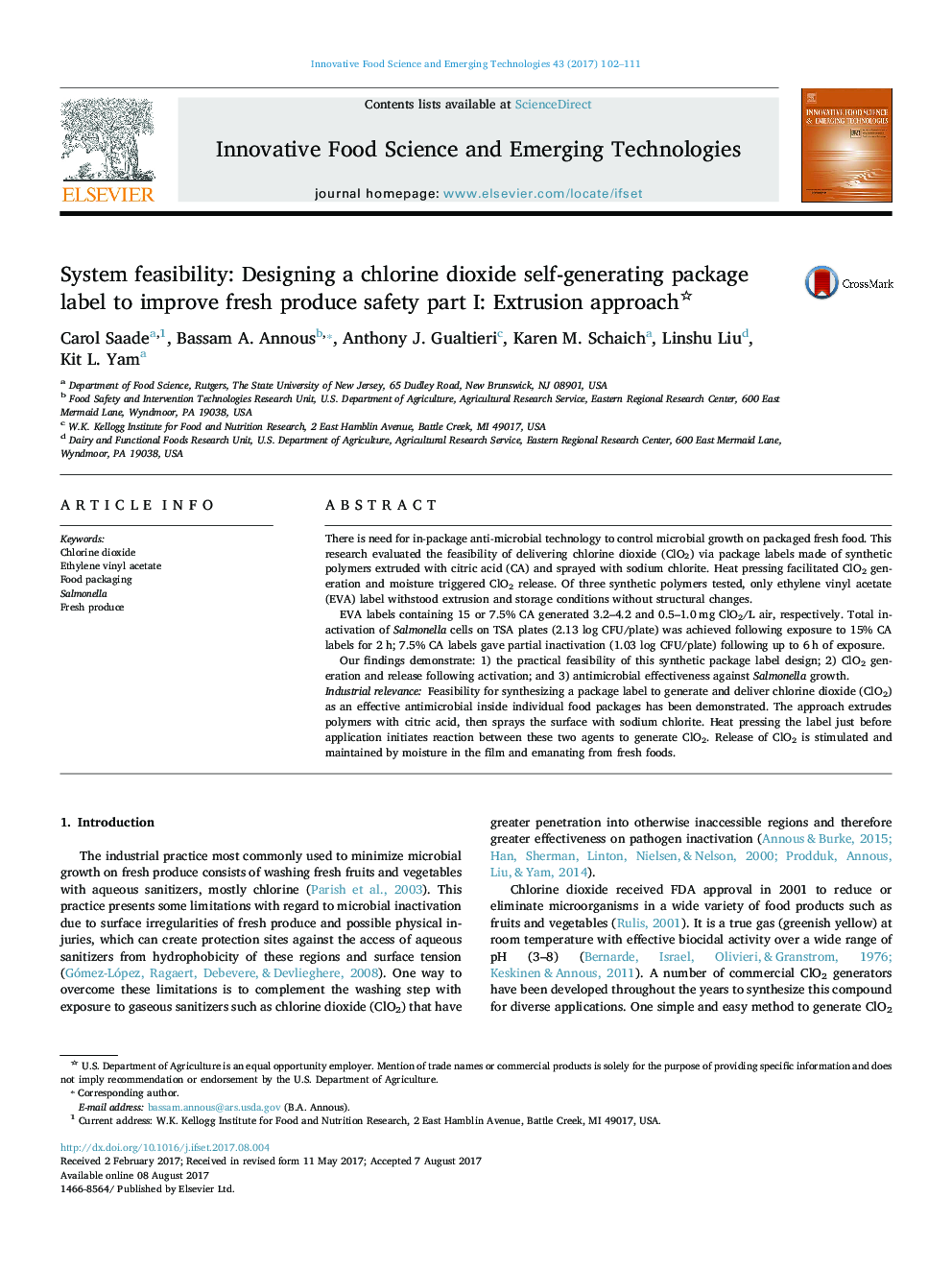| کد مقاله | کد نشریه | سال انتشار | مقاله انگلیسی | نسخه تمام متن |
|---|---|---|---|---|
| 5521693 | 1545525 | 2017 | 10 صفحه PDF | دانلود رایگان |

- Feasible to manufacture innovative and practical ClO2 self-generating package label
- Package labels are capable of generating enough ClO2 to inactivate bacteria.
- Package labels are activated at the same time as the food is being packaged.
- Flexibility of design allows modifications to manipulate the rate of ClO2 release.
There is need for in-package anti-microbial technology to control microbial growth on packaged fresh food. This research evaluated the feasibility of delivering chlorine dioxide (ClO2) via package labels made of synthetic polymers extruded with citric acid (CA) and sprayed with sodium chlorite. Heat pressing facilitated ClO2 generation and moisture triggered ClO2 release. Of three synthetic polymers tested, only ethylene vinyl acetate (EVA) label withstood extrusion and storage conditions without structural changes.EVA labels containing 15 or 7.5% CA generated 3.2-4.2 and 0.5-1.0Â mg ClO2/L air, respectively. Total inactivation of Salmonella cells on TSA plates (2.13 log CFU/plate) was achieved following exposure to 15% CA labels for 2Â h; 7.5% CA labels gave partial inactivation (1.03 log CFU/plate) following up to 6Â h of exposure.Our findings demonstrate: 1) the practical feasibility of this synthetic package label design; 2) ClO2 generation and release following activation; and 3) antimicrobial effectiveness against Salmonella growth.Industrial relevanceFeasibility for synthesizing a package label to generate and deliver chlorine dioxide (ClO2) as an effective antimicrobial inside individual food packages has been demonstrated. The approach extrudes polymers with citric acid, then sprays the surface with sodium chlorite. Heat pressing the label just before application initiates reaction between these two agents to generate ClO2. Release of ClO2 is stimulated and maintained by moisture in the film and emanating from fresh foods.
Journal: Innovative Food Science & Emerging Technologies - Volume 43, October 2017, Pages 102-111